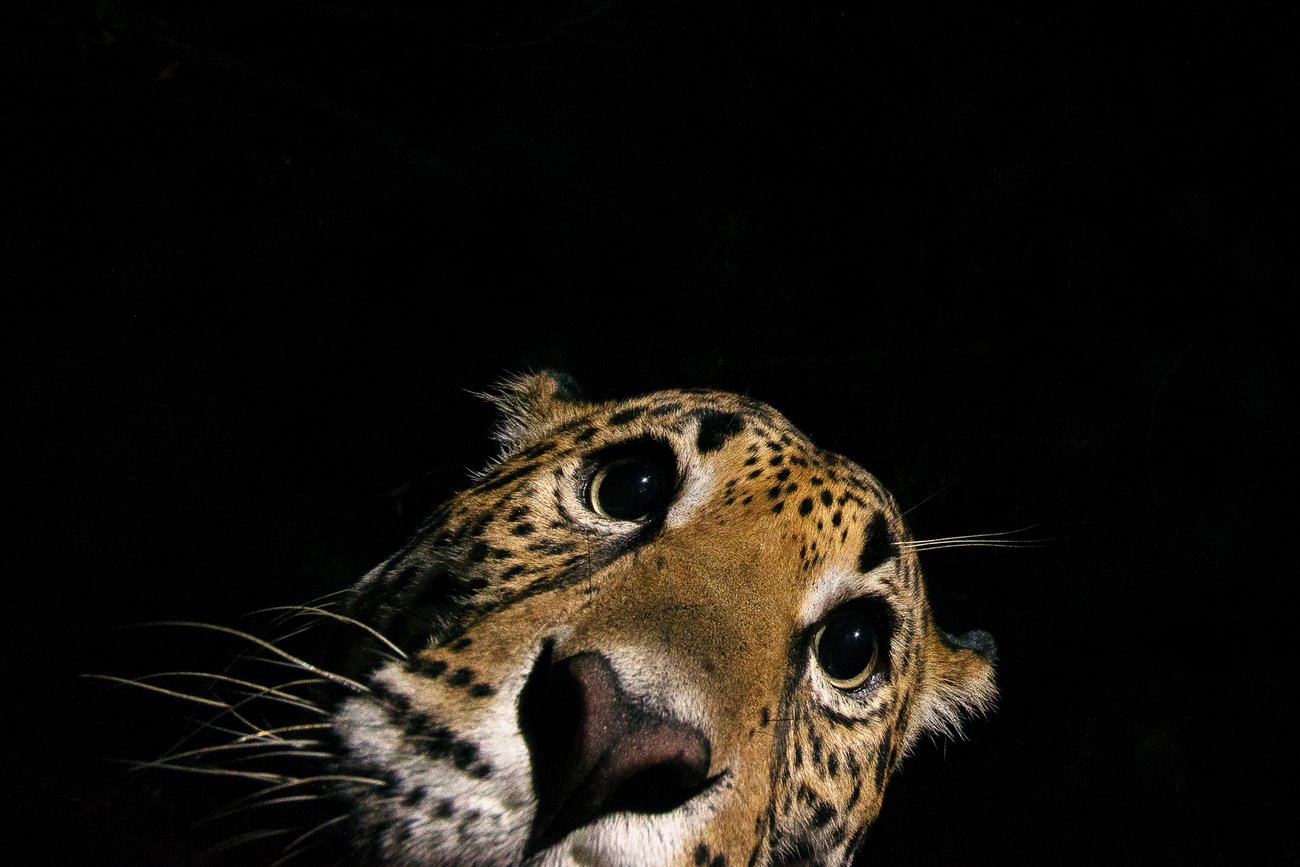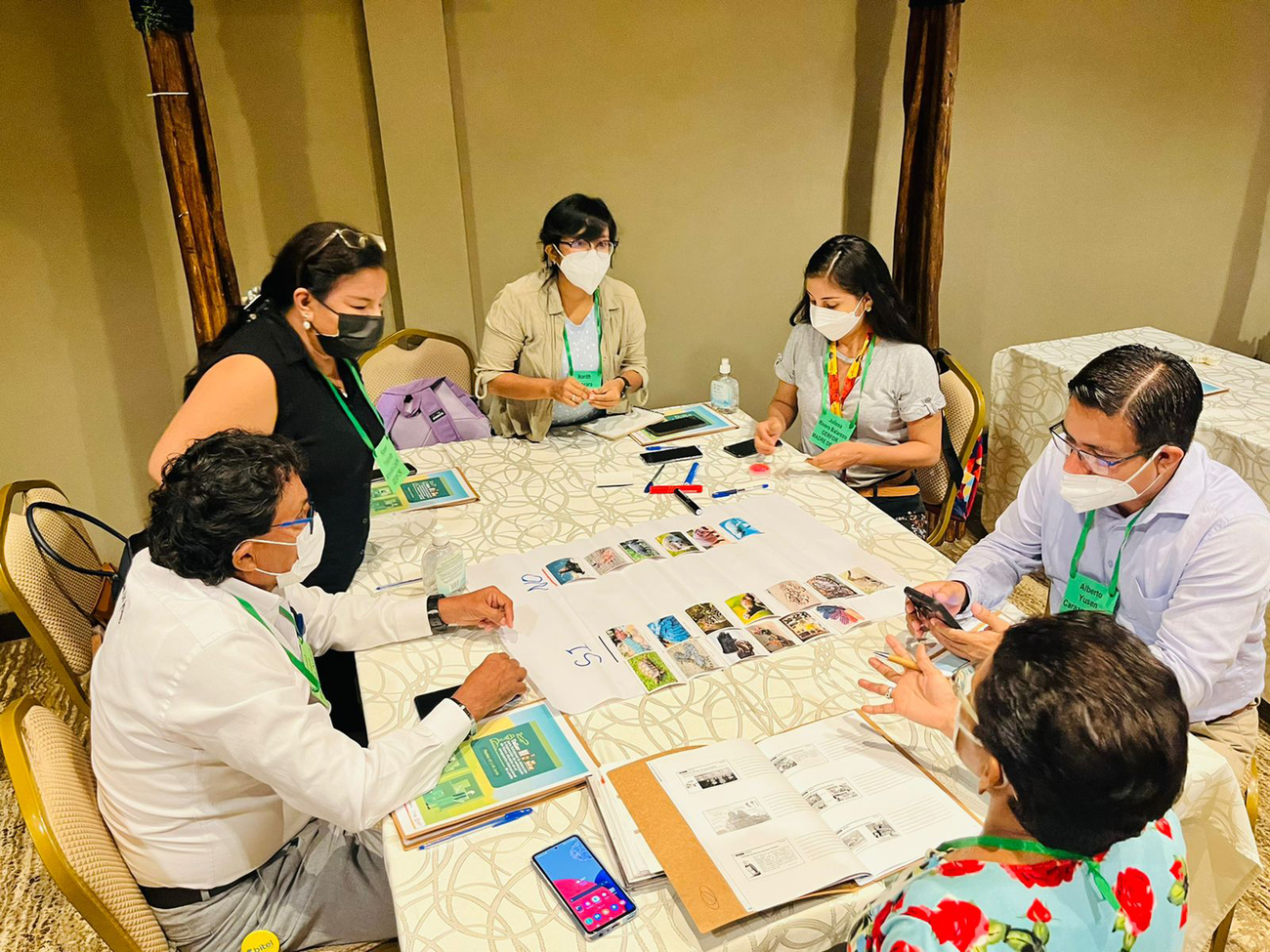Polen Cisneros
empowering enforcement agencies to combat jaguar trafficking in Peru
empowering enforcement agencies to combat jaguar trafficking in Peru

Peru is home to the second-largest population of jaguars in South America. Research has shown that the illegal trade in jaguar parts from the country is more common than previously thought. Fangs, claws and skins are increasingly found for sale in markets, handicraft shops, and even hotels.
As part of Operation Jaguar, a three-year project to tackle jaguar poaching and trafficking in Bolivia, Guyana, Peru and Suriname, IFAW empowers local law enforcement agencies and judiciary to increase coordination and the enforcement of legislation regarding the illegal trade in jaguars.
building effective wildlife crime cases
In June 2021, IFAW, together with the Peruvian National Forest Service (SERFOR), the Peruvian Society of Environmental Law (SPDA, consultant) and UNODC, facilitated trainings for several local law enforcement agencies, prosecutors and judges.
During the law enforcement training, the international context and scope of illegal wildlife trade were discussed, as well as the existing legal framework and the role of relevant authorities. After looking into international commitments such as the Convention on International Trade in Endangered Species of Wild Fauna and Flora (CITES), participants practiced identifying CITES permits and the kind of information they require.
A large focus of the training was also on legal and technical tools that agencies can use to prosecute a wildlife crime. Practical case exercises enabled participants to determine which agencies should be responsible for which aspects of a crime, the steps and decisions that need to be considered in the case of handling a confiscated animal, and how to build an investigate report.
After the training, identified next steps included continued capacity building on wildlife crime and threatened species, generating spaces for different authorities to exchange information and coordinate activities, and to adopt actions against wildlife cybercrime.
IFAW also carried out two two-day virtual sensitization judiciary trainings, offering participants insights into the needs for prosecuting wildlife crime, different interviewing and interrogation techniques, working with witnesses, and drafting statements. During a post-assessment of the trainings, it became clear that the greatest difficulty among justice operators was with regard to the disposition of wild fauna that has been confiscated or found in abandonment, and the impacts of the extraction of fauna.

detecting and inspecting wildlife shipments
After the three virtual trainings, SPDA began activities for the development of a protocol aimed at standardizing the exercise of product control and/or byproducts of wild fauna with land and air transport agencies. Meetings were held with representatives of the Regional Forest and Wildlife Authorities (ARFFS) to look into problems associated with the coordination between authorities involved in combating illegal wildlife trade. A change in government in early 2022 heavily impacted the progress in finalizing the protocol.
As a natural follow-up to the virtual law enforcement trainings, IFAW – along with SPDA and SERFOR – delivered an in-person training to strengthen the detection and inspection of wildlife shipments at an international airport in Peru in June 2022. Exercises for participants included dealing with CITES permits and the export of non-CITES specimens, determining the destination of wild fauna seized, found or abandoned, as well as considering functions carried out by other entities such as customs authorities. It is interesting to note that 20% of the participants worked at private cargo companies.
investigation into jaguar cybercrime
To help the government of Peru understand in detail how wildlife from Peru is being traded locally and internationally via the internet and social media platforms, IFAW contracted Monitor Conservation Research Society (Monitor) to carry out a cybercrime investigation to assess the scope and scale of the trade and identify steps that can be taken to address it. From May to July 2022, for five days a week, two major online marketplaces were surveyed, using established research methods used by IFAW and Monitor in similar exercises undertaken in the US, Europe, and Asia.
These sites were surveyed for jaguar parts sold in or originating from Peru. The investigation also included other (Peruvian) species known to be regularly trafficked from or through the country, such as small cats, river dolphins and crocodilians. The online trade in jaguar parts consisted mainly of skulls, assumed to be ornamental items, but also included canines, used for pendants. Only seven listings clearly identified as “jaguar” were found, therefore it is likely most parts are first sold in local markets.
Sixty-one percent of listings were within the province of Lima, suggesting that animal parts had already been transported far from their potential origin (most likely across the country from the Amazon region). Although Lima is popular for (physical) wildlife trade, the illegal trade is known to thrive in Iquitos, where Brazil, Colombia and Peru meet, and wildlife trade is difficult to regulate.
Next steps recommended to the government of Peru include the continuation of monitoring online platforms for sales in jaguars and their parts in order to inform law enforcement actions, and carrying out an investigation into the cross-border trade of wildlife, the bushmeat trade in Peru, and the trade in by-products.
Related content
Our work can’t get done without you. Please give what you can to help animals thrive.